Month 10:2, Week 1:1 (Rishon/Pesach), Year:Day 5940:268 AM
2Exodus 3/40, Yovel - Year 50/50
Gregorian Calendar: Saturday 31 December 2016
The Word Made Flesh
III. Paul - The Scope of Study
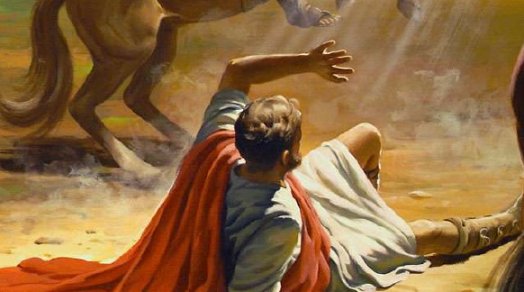
Continued from Part 2
Introduction
History has been unjust to many of its greatest men and women, yet by a strange irony of fate, it has tried to redefine the apostle Paul into something and someone totally unrecognisable. And one of the worst injustices done to him is to have accused him of being "the dogmatist, the doctrinaire thinker, the creator of a philosophy of religion and the constructor of a system. This is history's greatest injustice to its greatest saint. It is the blunder which has ruined Paul for thousands" [1]. This is no less true today as numerous messianics pounce on the apostle and falsely accuse him of being anti-Torah (see The Anti-Paulists) as it was back in 1935 when these words were penned by one of the greatest Pauline scholars until the advent of N.T.Wright (1948-) [2] in our own day.
The Shema and 'Monotheism'
In this series of articles, of which this is the third, we are claiming that the Messiah was both a human being and Elohim (God) without violating what has come to be called 'monotheism', the idea that there is only one Elohim (God). What most believers do not know, because it has never been taught them, is that the rather dry, abstract word 'monotheism' finds its origins in 17th century European theological circles. Not only would a Judahite ('Jew') in the first century have been unable to define the word but you would have been hard-pressed to find any word or concept like it 2,000 years ago. Every Yahwist throughout the millennia knew, memorised, and cited the Shema, but not (obviously) in English and certainly not with the word-concepts and nuances embedded in our own 21st century language:
"Hear, O Israel: The LORD our God, the LORD is one" (Deut.6:4, NIV).
The Hebrew Shema
The ancient Israelite would have declared, in Hebrew, before the pen of the Scribes started messing around with the Divine Name (and replacing 'YHWH (Yahweh)' with 'Adonai'):
 An Interim Translation
An Interim Translation
Before we can hope to accurately translate this into our own language we have a lot of homework to do, the task I have been led to set myself for this essay. We have seen a typical modern English rendition, the New International Version, which doesn't really tell us very much at all, as there is (for one thing) doubt as to the meaning of words like 'God', 'LORD' and 'one'. Even that which follows, though a significant improvement on the NIV, still falls short of what this verse is actually saying. But since we need a handle to be getting on with, let me offer an interim translation consisting of a combination of English and Hebrew until (later) we can establish exactly what is being said:
"Hear, O Yisra'el (Israel): Yahweh our Elohim (God), Yahweh [is] echad!"
An Important Question of Worldviews
The problem we face in reading Scripture will always be the tendency to view what is written in the receptor language (Hebrew) through the lens of a 21st (or 20th) century (if you are older like me) Anglo-American worldview. Until we clearly and precisely understand what Moses' and Paul's worldview(s) were we will never grasp the mystery of biblical monotheism nor understand Yah'shua the Messiah's (Jesus Christ's) relationship to it. Only as we underststand Paul's theology will we understand his worldview in which he sets his Besorah (Gospel) message.
The Theological Juggler
In order to accomplish this, we will have to demonstrate some mental dexterity and become something of the conjurer because you cannot present theology and worldview sequentially - you have to juggle them as a juggler might juggle two balls, keeping them constantly in motion until they blurr into 'one' which we will call 'echad' or 'two-in-one'. We will be doing this same 'trick' with the Mosaic Shema and what we will come to understand to be the Pauline 'Messianic Shema' and we shall observe how the testimony of Scripture reveals to us that they are both two and yet one (echad). We will use numerous illustrations, hopefully, so that you can visualise these things with the mental tools we understand and employ in our own particular century. For we shall be describing and discussing singular, double and multiple levels of reality, often simultaneously.

Learning to use Both Halves of Your Brain
For this tavnith (pattern) to work and remain valid (true) it must work for not only all of Paul's theology but for all biblical theology too. To be consistent with the Hebrew mindset or way of thinking, we also have to be able to scrutinise this emet (truth) through both the Eastern 'right-to-left' intuitive method (left-brain - the ancient Hebraic way) as well as the Western 'right-to-left' logical method (right-brain - the modern Ephraimite way), since obviously Yahweh is the author of both halves of our brain. Indeed, for the Remnant to do 'echad (whole/oneness) theology' we have to learn to do both separately and together as echad (one).
A Clue From Quantum Mechanics
If this sounds a little esoteric, bear with me, as I pray this will unfold in both what the Hebrews call the p'shat, simple or literal way as well as the sod or mysterious way and all the shades (remez/hint and drash-midrash/search) inbetween. If the physicists and mathematicians among you are detecting hints of quantum mechanics here, in which electrons are both viewed as particles and waves (a very mystical echad indeed), you would be right - understand that these concepts link in too, because this is how Yahweh's created Cosmos works. They provide insights into the Uniplurality of the Elohimhead (Godhead). Elohim (God) - at the highest level - is Three separate Persons (Father, Son & Ruach/Spirit - 'particles') yet a single Elohim (God, Mighty Ones, Powers - single 'wave complex'). In coming to understand how Yahweh has set things up, many of the apparent 'contradictions' in Scripture will disappear as you put the puzzle together. Yahweh's revelation is, after all, seamless.
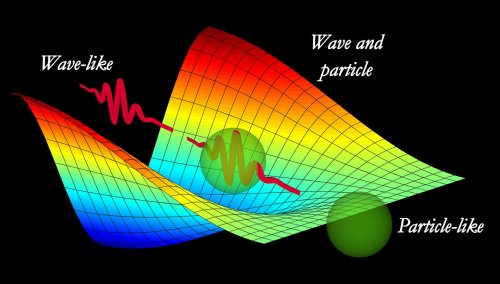
Interference from Neo-Platonism and Kabbalism
So to recap - we are dealing with a Whole and we are dealing with Parts. Each individual part must be observed and studied but the whole must be studied too. From this we will, like good detectives, be able to both 'assemble' the evidence (male principle) and sense intuitively (female principle) the way things are set up as a system. You must, if you want to get anything out of this study, leave behind your Western Catholic neo-Platonic 'Trinitarianism' (which permeates and corrupts Christian 'Churchianty') along with the mediaeval kabbalistic occultism of Rabbinic/Talmudic Judaism (which permeates and corrupts 'Messianic Judaism' by inheritance). We have to put these aside or they will create distorting mirrors and smokescreens that will prevent us from seeing the beauty of the tavnith (pattern) revealed through Paul.
FALSE EPHRAIMITE GODHEAD THEOLOGY
 The Two False Systems - Good vs. Bad Cop (& vice versa)
The Two False Systems - Good vs. Bad Cop (& vice versa)
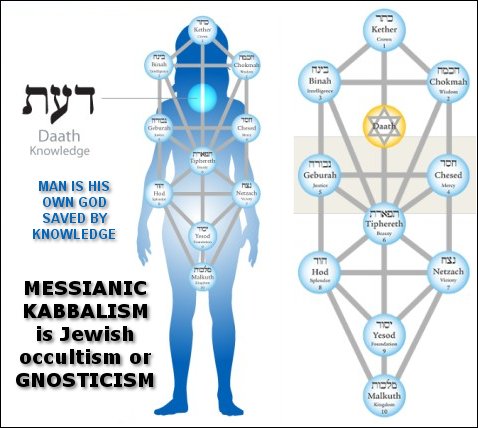 FALSE JEWISH GODHEAD THEOLOGY
FALSE JEWISH GODHEAD THEOLOGY
Paul's World
As is true of us in our multicultural world, so Paul's had "multiple historical contexts" within which there were "multiple social and ecclesial pressures and questions" [4]. The Roman Empire, of which Judea was a political part and in which the Messianic Scriptures (New Testament) were born, was multicultural, cosmopolitan (in the towns and cities, at any rate) and polyglot (multilingual). Judeans of the time spoke Aramaic (for daily conversation), Greek (for trade) and Hebrew (in Scripture-reading). Paul's world was Antioch - a Greco-Roman city on the River Orontes in the Province of Syria [5] - and Jerusalem.
Theology is Not Static
Moreover, remember that theology is never static - it can't be, unless it has become fossilised by dead tradition. It is constantly expanding as new light and emet (truth) shine through the Davar (Word). This is true even within the Bible itself as Yahweh unfolds more and more of His revelation throughout the ages, beginning at Genesis and ending at Reveletion. Therefore the brightness of the spiritual light coming out of its pages is not even, nor should we expect it to be. And if we are truly operating in the Ruach haQodesh (Holy Spirit), it should get brighter and brighter without the tavnith (pattern) at all changing. Rather, we should expect to experience light and emet (truth) expanding in our consciousness like a mushrooming fractal of ever greater beauty and glory.
The Pauline Tapestry
One thing Paul's writing is not, even though most of his readers tend to treat them as such, is a collection of maxims, detatched from theological statements, plus occasional 'proofs from scripture'. Rather, it is like a tapestry of interwoven strands or themes (like the Persian carpet below) which, being laid down by divine inspiration, possess internal coherence, not just in the details but in the broad sweep too.

Words as Spirit in Motion
The strands or threads harmonise into a single echadness or oneness - juristic, participationist, transformational, apocalyptic, covenantal, salvation-historical and others besides, including those familiar geometrical metaphors, 'vertical' (heavenward) and 'horizontal' (earthward). And running through the middle of this swirrling mass is a single core of the Davar (Word) rotating about a single axis of chayim (life), with the whole moving along a single derech, path, way or trajectory and being held in place by emet (truth). Viewed as spiritual motion, they are not unlike the grid of forces that make up earth's journey through space, here using one of the most famous "I AM" (Jn.14:6) statements ('I am the Derech/Way, Emet (Truth) and Chayim/Life') by way of illustration:
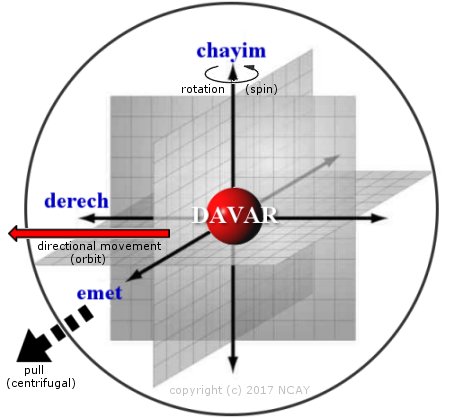
The Earth's Smiliar Motions
As we will see, hopefully in a later study, the same tavnith (pattern) applies astronomically with the earth spinning on its axis and moving around the sun and along a tubular trajectory through space following the sun, held in place by gravity, by means of which we experience day and night, variations in weather, gravity, etc.:
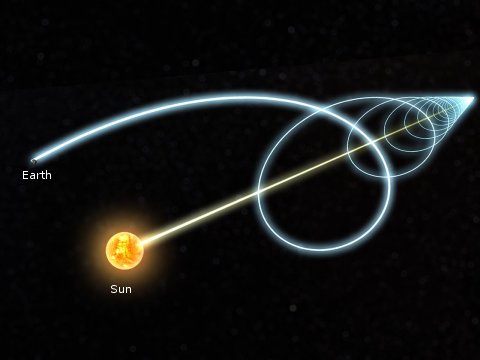
Next time we shall be examining the framework of Second-Temple Jewish theology as the backdrop of Paul's own theology.
Continued in Part 4
Endnotes
[1] James S.Stewart, A Man in Christ (Hodder & Stoughton, London: 1972), p.2 - this seminal book should be in the library of every serious student and teacher of the Pauline writings. He was a minister of the Church of Scotland and taught New Testament Language, Literature and Theology at New College, University of Edinburgh.
[2] Nicholas Thomas Wright is a leading British New Testament scholar and retired Anglican bishop. Between 2003 and his retirement in 2010, he was the Bishop of Durham. He then became Research Professor of New Testament and Early Christianity at St Mary’s College in the University of St Andrews in Scotland. Though I don't agree with all of his theses and conclusions, I have learned much from this one of the greatest Pauline historians. His four-part, two-volume, Paul and the Faithfulness of God: Christian Origins and the Question of God (SPCK, London: 2013) is essential reading for all Pauline scholars.
[3] See Michael S.Heiser, The Unseen Realm: Recovering the Supernatural Worldview of the Bible (Lexham Press, Bellingham, WA: 2015) - also essential reading for the Remnant Bible teacher. Also see his website, The Unseen Realm which contains supporting research work for his books. Dr.Heiser studied at Dallas Theological Seminary, he has an MA in Ancient History from the University of Pennsylvania, and he has an MA in Hebrew Studies and a PhD in Hebrew Bible and Semitic Languages from the University of Wisconsin-Madison. He has published widely in scholarly journals and popular periodicals such as Bible Study Magazine.
[4] N.T.Wright, Paul and the Faithfulness of God: Christian Origins and the Question of God, Parts III & IV (SPCK, London: 2013), p.609
[5] Antioch was a chief center of early Christianity during Roman times. The city had a large population of Jewish origin in a quarter called the Kerateion, and so attracted the first missionaries. Evangelised, among others, by Peter himself, according to the tradition upon which the Antiochene patriarchate still rests its claim for primacy, and certainly later by Barnabas and Paul during Paul's first missionary journey. Its converts were the first to be called Christians (Acts 11:26). This is not to be confused with Antioch in Pisidia, to which the early missionaries later travelled.
Acknowledgements
[1] Ben Witherington III, John's Wisdom: A Commentary on the Fourth Gospel (The Lutterworth press, Cambridge, England: 1995)
[2] J.C.Fenton, New Clarendon Bible Commentaries, The Gospel According to John in the Revised Standard Version (OUP, Oxford, England: 1970)
[3] J.L.Houldon, Black's New Testament Commentaries, Johannine Epistles (Adam & Charles Black, London: 1973)
[4] Sydney Temple, The Core of the Fourth Gospel (Mobrays, London & Oxford: 1975)
[5] N.T.Wright, Paul and the Faithfulness of God: Christian Origins and the Question of God (2 vols.), (SPCK, London: 2013)
Comments from Readers
[1] "Thanks for sharing your gifts to compile a document like this and bringing it to our understanding in a manner that amazes!" (AMN, South Africa, 9 January 2917)
This series is dedicated to my son Josef on the occasion of his 22nd birthday

|


